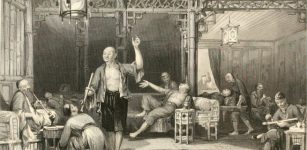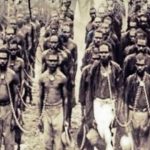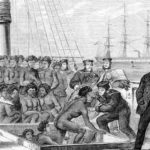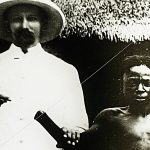The British Empire’s Opium Trade Led to the War on Drugs

In the mid-18th century, China was exporting large quantities of highly sought-after commodities to European countries, such as porcelain, silk, tea and spices. By contrast, the goods produced in Europe were of little interest to the Chinese.
Under the Qing Dynasty, all incoming foreign trade took place in the port of Canton – today’s Guangzhou – and silver was the currency of exchange. In Britain, an average household was spending 10 percent of its budget on tea, but British traders were running low on silver to procure it.
In 1780, Warren Hastings, the first governor general of British India, came up with the idea of exporting Indian grown opium to China. At the time, the British East India Company ruled India on behalf of the British Empire, and had the monopoly on British trade with China.
The first opium shipment was difficult to sell. However, ten years on, the Chinese demand for the drug had grown exponentially, as increasing numbers of local people became dependent on it. Using a number of legal loopholes, the British shipped tonnes of the drug into the country.
The trade in opium soon accounted for close to 20 percent of the revenue in India. British trade in opium continued until the 1920s. A few decades after it ceased, the British abandoned the colony.
By the 1830s, millions of Chinese people were dependant on opium, and silver was scarce. In 1839, Lin Zexu, the imperial commissioner, enacted laws banning the drug throughout the empire. Those who sold opium were arrested, and British shipments were seized and destroyed.
Lin reopened trade with the British on the proviso that opium was no longer sold. This irked the British government as it favoured free trade, and it called on the Chinese to compensate its traders.
After a skirmish between the British Royal Navy and Chinese ships, Britain declared war on China in 1840. The Chinese surrendered two years later, and the Treaty of Nanjing was signed. This opened five new trading ports, Hong Kong was ceded to Britain, and the trade in opium continued.
However, the British continued to push for the legalisation of opium in China, as well as the opening of the whole country to merchants. In 1856, the Chinese crew of a ship that was registered in Hong Kong was arrested for smuggling. This gave the British an excuse to launch the second opium war.
With the aid of the French, the British once again defeated China. The Convention of Peking was established, which provided that more cities open to foreign trade. Christians were granted civil rights and the opium trade was legalised.
The first international drug control treaty
The opium trade in China hit its peak in 1906, with 35,000 tonnes being grown domestically and a further 4,000 tonnes being imported. An estimated 13.5 million people were using the drug in China, including 27 percent of the male population.
Due to the Chinese opium crisis, the Shanghai Opium Commission was held in 1909. The first international conference on drugs was convened by US president Theodore Roosevelt. The US was interested forging ties with China, and it was aware of the empire’s concerns over the British trade.
Prior to the commission, a number of countries instigated reforms to show progress at the meeting. A bilateral agreement was set up that bound Britain to gradually eliminate its opium trade in China, and China agreed to slowly bring a halt to its poppy cultivation.
The meeting laid the groundwork for the first international drug control treaty. In 1912, the Hague International Opium Convention came into play. The agreement required all signatory states to control the manufacture, distribution and sale of opium, morphine, heroin and cocaine.
The beginning of the drug war
In the led up to the Shanghai meeting, the US passed its first domestic drug control law, as a show of good faith. The Opium Exclusion Act banned the importation of opium into the US. This was despite there being no opium crisis in the States. Indeed, opium use was on the decline.
The prohibition only applied to opium that was processed to smoke, which was favoured by Chinese immigrants. It didn’t apply to medicinal opium products that others in the country continued to use and obtain at the pharmacy.
Authorities across the country moved to arrest traffickers, and closedown opium dens. In California, the federal ban was taken a step further, as new laws were enacted that outlawed personal possession. And thus, began the criminalisation of people who use drugs.
The crackdown on opium sent prices through the roof. And organised crime networks took over distribution. As authorities soon realised the trade continued, they stepped up arrests and raids. Many people moved from opium onto morphine – a more potent opioid – which was still legal.
The government then passed the Harrison Act in 1914, which outlawed the non-medicinal use of morphine, heroin and cocaine. The black market grew and before long the headlines were filled with reports of drug-related crimes, which the police put down to the rise in price due to prohibition.
Tightening international controls
The US pressured the League of Nations into establishing stricter international controls. This led to the 1925 Geneva Convention, which had a focus on transnational control. It also placed restrictions on the cultivation and production of cannabis, as a late addition.
The legal frameworks established by this convention, and a series of subsequent international drug control treaties, were consolidated in the 1961 United Nations Single Convention on Narcotic Drugs, which is the key document of the modern system of prohibition.
And further developments led to two more treaties. The 1971 Psychotropics Convention placed controls on amphetamines, psychedelics and benzodiazepines, while the 1988 Trafficking Convention focuses on international drug smuggling and penalising domestic drug possession.
Militarising a health issue
The US-led war on drugs accompanied the UN treaties. In June 1971, US president Richard Nixon heralded in this intensification of drug law enforcement, which has involved mass incarceration domestically and military interventions internationally.
In 2011, the Global Commission on Drug Policy released its report, outlining that prohibition has led to increased drug consumption and fostered huge criminal networks. The panel of world leaders and intellectuals opened the document with the declaration, “The global war on drugs has failed.”








